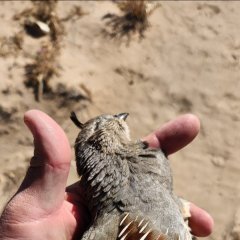-
Content Count
5,948 -
Joined
-
Last visited
-
Days Won
30
Everything posted by Couzer
-
Awesome bull!!!
- 52 replies
-
I ordered a bennie from them 2 weeks ago and when it came in it looks like I ordered the wrong one due to an error from thier mobile app. Kind of good customer service, they sent me a prepaid label when I asked for one to ship it back. Thier mobile app picture does not show the correct color or pattern reflecting the order. I use my mobile for ordering almost everything. The guy on the phone still didn't understand and said "make sure you pick the right color next time", I had to explain again that the mobile app picture does not represent the correct color selected. So we chatted and asked him to have thier people review the mobile site and he ensured they were working on it to get it fixed. Again the color I wanted was out of stock and said I should receive it in the next few weeks 😞
-
I'll try to make it if work allows! Awesome Kidso!!!!
-
I had a hand grinder for a week then I bought a electric one. You guys are tough son's of guns that use hand grinders!!!!! LEM is the way to go, buy anyone that is rated by horse power from what I was told. I had bought the .25 horsepower one, got a little warm after processing a coues, so I upgraded to the .75 horsepower and am very happy. It will grind as fast as you can feed it. Plus the .75 one has a larger opening to feed the meat through!
-
I always look at the heads of the screws/bolts to see how bugered up they are. Most people just take any old screw driver to the screws and it usually tells you if someone has had the rifle apart. Then I ask why? Someone professionally would use the right screwdriver size and not buger it up. If it's wood look for cracks, they can be hard to see sometimes Also look for rust or pitting
-
Good deal
-
http://www.midwayusa.com/product/937051/rcbs-rock-chucker-supreme-master-single-stage-press-kit?cm_vc=ProductFinding Correction, This is the kit I was referring to with the rock chucker, this is the one I use. I don't have any experience using the explorer, might want to check the specs on it to make sure it can load the larger calibers you need it to load. Check Black Friday deals as well like midway etc
-
Yea that's the one I was referring to, I still use that same press. Very very good. Hornady, forester, redding also make great products.
-
The Rockchucker RCBS kit is really good! I would stay away from LEE, I don't like thier dies.
-

Late Dove Season
Couzer replied to bgshooter's topic in Small Game, Upland Bird, and Waterfowl Hunting
Lots of doves, few ducks this evening. The dove were unbelievable 30 mins before dark. The last duck I shot fell and hit our lab on the back, pretty funny. No lost birds because of our awesome lab! -
24b was a blast this year! Missed a good buck and saw a few big ones. I dislike hunting opening weekend do to the traffic
-
Tools are out there to get it done. Member on here Southernexpress is very knowledgable and he takes the time to help others out.
-
Went out this evening with a buddy from work and had a blast. I missed quite a few shots, but this was my first time actually going out being successful. Decoyed and called
-
Ha I'm a nachos with jalapeños with chili right now! Even worse it's the convenience store process nachos, taste good but ugh I'm feeling it now
-
Not sure yet, I asked my buddy how to cook them and he said he usually makes fajitas out of them. Basically grab some oil in a frying pan, through your veggies in (peppers, onions), fry them up and then take them out. Then through the meat cut into thin slices into the frying pan with all juices from the veggies and more oil. Then put your veggies back in for a little longer and you should be good to go, wrap them in a tortilla with cheese and sour cream. ??? Sounds ok? I might try to smoke some of it as well. He also said to soak the meat in salt water for 4-8 hours? So I guess I will try it out, never had duck before. I had to fillet it all out last night and throw it in the freezer for now because I work from 1am to 1pm.
-
I agree and know squat about hunting them until I met my buddy at work. These birds could of been part local birds, but not sure
-
Queen Creek birds
-
Yea the benelli's are sweet guns, cuts the recoil down drastically. The in laws have some private property with a pond on it. We got there about 1430 this afternoon and there were a few ducks already on it. They few immediately when we got there so we set up a couple dozen decoys and a blind. It was really cool to see them come in circling literally 15 times before they came into distance. We shot them right before they hit the water, it was tough to hold out that long as I was getting a itchy trigger finger. But like my buddy said they came into the calls and decoys, such a rush. I missed 10 or so, between the both of us we shot 10 total, 5 each.
-
Ah man can't say twisted without pics ha ha! Congrats to your uncle and aunt
-
There's always one that is always assuming in a thread 😜. Nice job Presmyk, way to handle the conversation. Keep it up
-
Nice job Houston! Congrats to the both of you! Not easy at all, lots of time and patience involved!
-
Congrats! Not easy late archery bow!!!
-
Gas lights have been on my side many times traveling up to 50 miles with no shortage! Sucks someone stole your gas, good attitude you have and glad you helped out others on the trail!
-
Nice!!!
-
Nice job!!!

